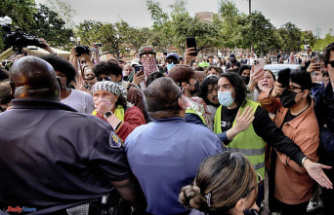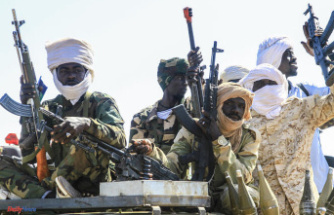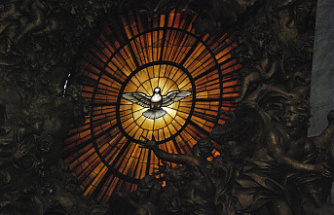The consequences of the fire at the blast site in Berlin's Grunewald forest continue to pose great dangers for the fire brigade. The emergency services want to get closer to the center of the scenario. The aim is to reduce the danger area, said fire brigade spokesman Mario Witt on Sunday.
It is about being able to bring the emergency services closer to the blasting site and being able to continue to be active in the forest. In many small places it burns again and again. According to estimates, the operation will last for days.
Tons of old grenades, ammunition and confiscated fireworks are stored in buildings at the site, which has been the site of fires and explosions since Thursday. The detonation site for the destruction of weapons and explosives has existed since 1950. The police are responsible there.
Two extinguishing robots in action
The firefighters currently have a safety area of 500 meters around the blasting site. The fire on the blast site itself has currently been extinguished. A demolition expert was there in an armored vehicle on Sunday. He was able to salvage important technical material.
The fire brigade can now also use a second extinguishing robot. The vehicle had arrived from Falkensee in Brandenburg, Witt said. The hotspots defined on the site can now be cooled by two firefighting robots and a firefighting tank.
The fire brigade continues to fight smaller fires in the danger zone. "There are places we can't get to," said Witt. Occasionally smaller fires can be observed again and again. "But we're not allowed to take action there yet, because only armored vehicles still have access there." Witt spoke of a very dynamic situation in which a lot could change in the short term.
The situation in the center remains explosive. "We're still talking about a very acute danger at the blast site," said Witt. "If special forces now enter the scene directly, that does not mean that there is no danger, but that it is there. That's why we have to act with extreme caution." The work on the blasting site is life-threatening.
Four mobile extinguishing units with six vehicles were on the road on Sunday night. These watered the forest in the area around the danger zone to protect areas that are not yet affected by the fire. At the same time, smaller fires were fought again and again in the development phase.
The cooling measures with water at the blasting site are suspended at night because the robots and tanks used do not have enough light and visibility. This work continues in the morning.
The Avus is still closed
After the three-day route closure, rail traffic is now back to normal. That applies to regional and long-distance traffic, said a spokesman for Deutsche Bahn on Sunday in Berlin. The fire brigade released the train route again on Saturday in consultation with the police. S-Bahn, regional trains, IC and ICE were affected.
The Avus called Autobahn 115, however, remains closed. According to the information, it is not expected to open until Monday morning at the earliest.
The general safety zone of 1,000 meters around the site that has existed since the fire broke out on Thursday also remains in place. An exception only applies to the railway line that runs on the outer edge of the exclusion zone.












